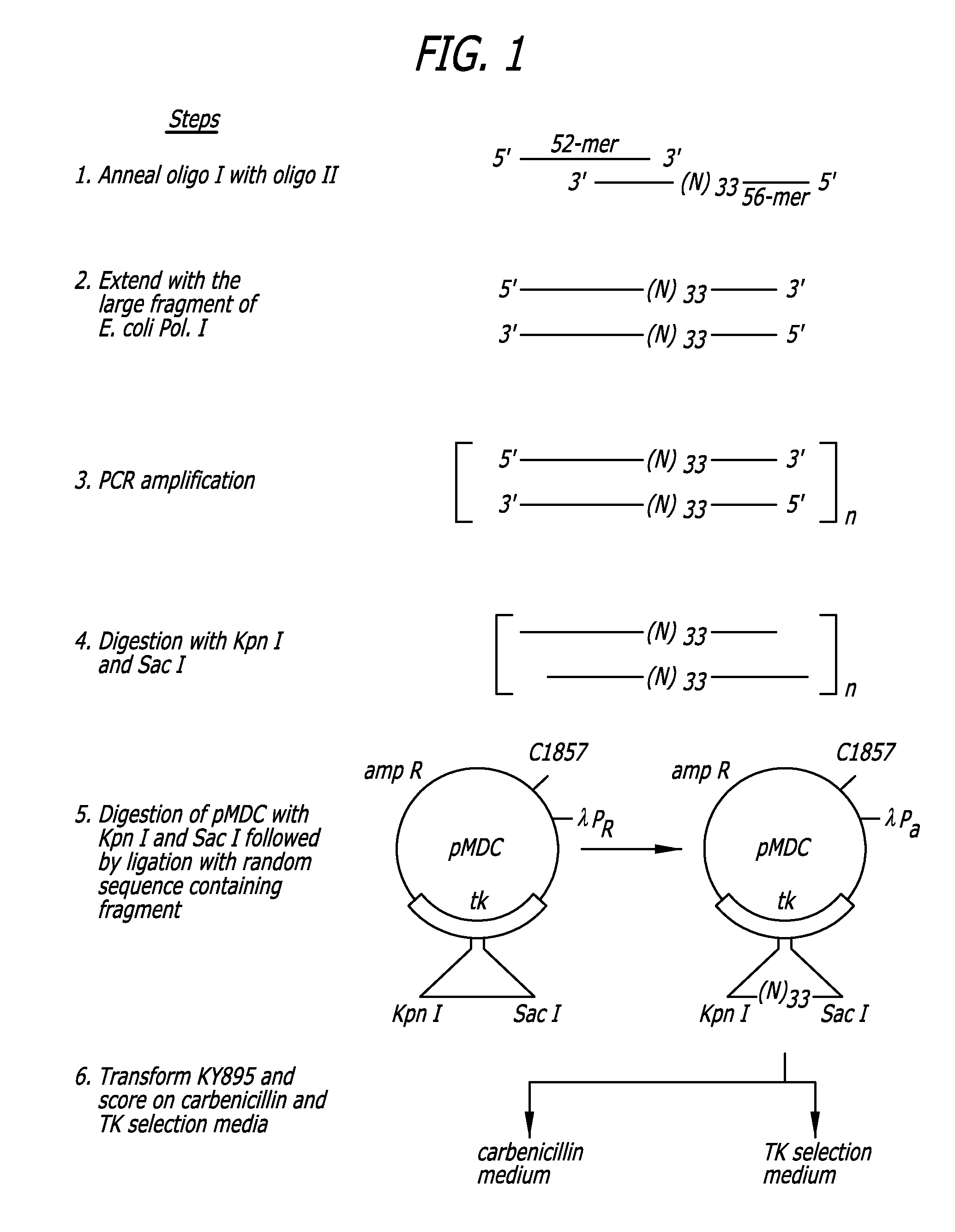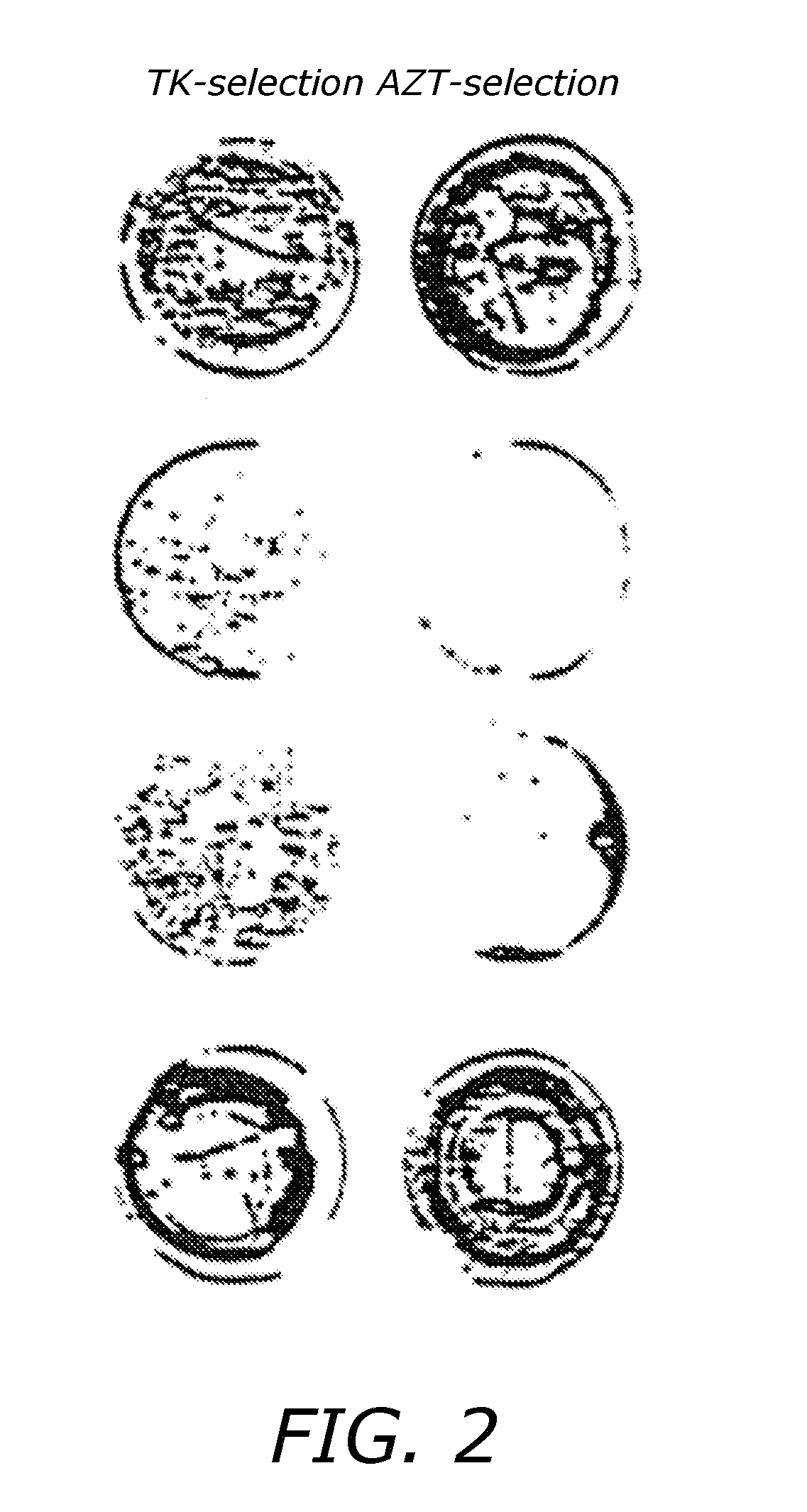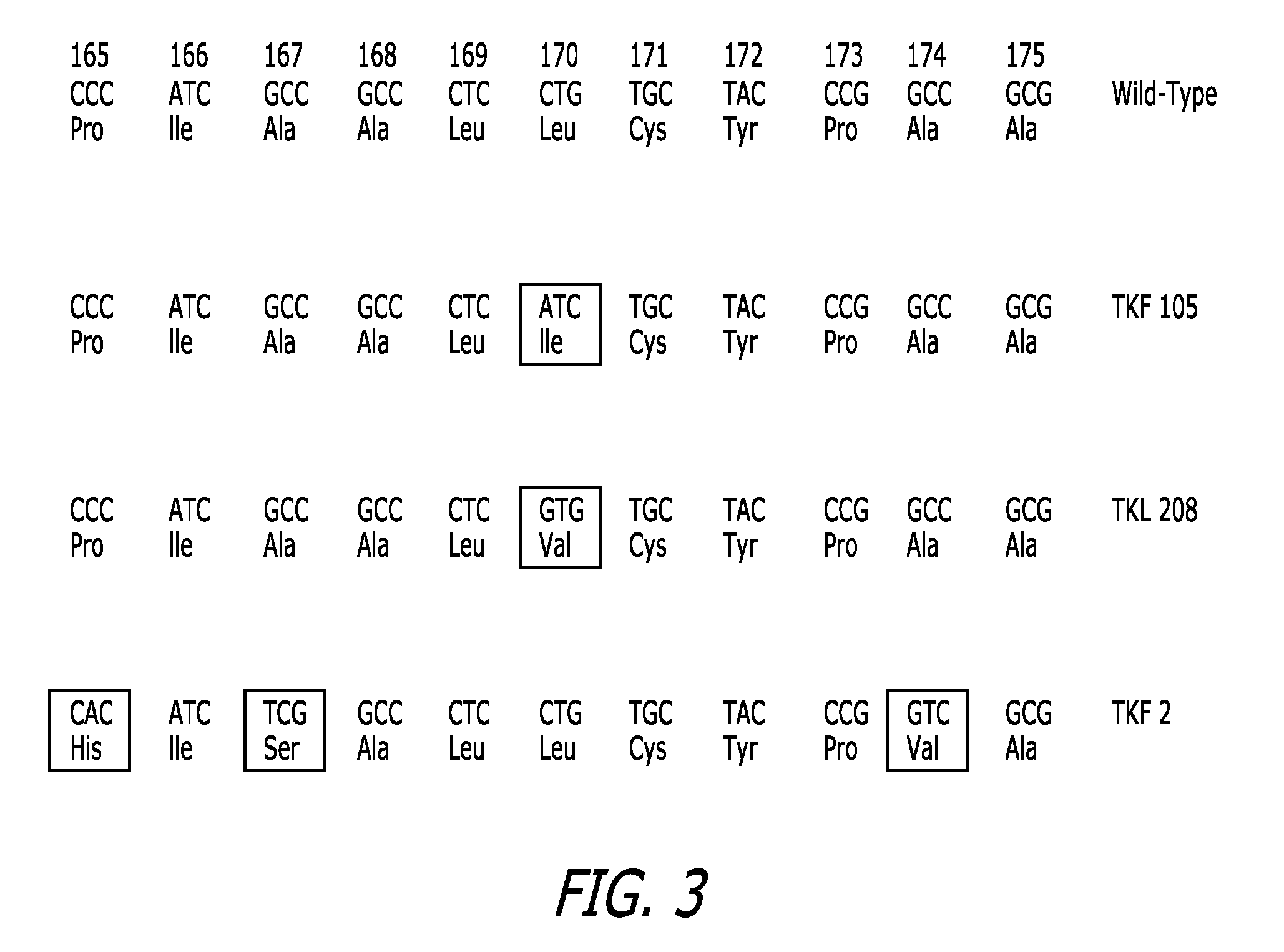Thymidine Kinase Mutants and Fusion Proteins Having Thymidine Kinase and Guanylate Kinase Activities
a technology of guanylate kinase and thymidine kinase, which is applied in the field of mutant enzymes of herpesviridae, can solve the problems of life-threatening side effects, radiotherapeutic and chemotherapeutic agents are toxic to normal tissues, and few effective treatments for many viral, parasitic, genetic diseases, etc., and achieve the effect of increasing the biological activity of thymidine kinas
- Summary
- Abstract
- Description
- Claims
- Application Information
AI Technical Summary
Benefits of technology
Problems solved by technology
Method used
Image
Examples
example 1
Construction of TK Mutants Containing Mutations at Codons 165-175 Utilizing a 20% Random Library
[0142]Example 1 describes the construction of TK mutants containing mutations at codons 165 to 175, utilizing a 20% random library. A schematic outline which depicts the strategy utilized in this example is set forth in FIG. 1.
A. Generation of TK Mutants
[0143]1. Generation of Oligonucleotides
[0144]A 52-mer oligonucleotide with a wild-type tic sequence (SEQUENCE ID. No. 2) and a 56-mer that contained degenerate nucleotides spanning from codon 165 through 175 (SEQUENCE ID. No. 3) of the tk gene (FIG. 23 discloses nucleotides in the open reading frame of HSVTK-1 [SEQUENCE ID NO. 1]), (where N=80% wild-type nucleotides and a 20% mixture of the other three at each position) were synthesized by Operon Technologies (San Pablo, Calif.). Both oligomers were complementary to each other along 12 bases at their 3′-ends.
(SEQUENCE ID No. 2)5′-TG GGA GCT CAC ATG CCC CGC CCC CGG CCC TCA CCCTCA TCT TCG AT...
example 2
Construction of TK Mutants Containing Mutations at Codons 165-175 Utilizing a 100% Random Library
[0159]Example 2 describes the construction of TK mutants containing mutations at codons 165-175 utilizing a 100% random library. The strategy which was utilized for this example is similar to that described in Example 1 above.
A. Generation of TK Mutants
[0160]1. Generation of Oligonucleotides
[0161]A 52-mer 5′-d(TG GGA GCT CAC ATG CCC CGC CCC CGG CCC TCA CCC TCA TCT TCG ATC GCC AT)-3′ (SEQUENCE ID No. 8) with a wild-type tk sequence and Kpn I site at the 5′ end was synthesized by Operon Technologies (San Pablo, Calif.). In addition, a 56-mer containing random nucleotides corresponding to HSV-1 tk codons 165-175 and containing a Sac I site at the 3′ end 5′-d(ATG AGG TAC CGN NNN NNN NNN NNN NNN NNN NNN NNN NNN NNN NNA TGG CGA TCG AA)-3′ (SEQUENCE ID No. 3), where N=equimolar concentrations of G, A, T, or C, was also synthesized. The oligonucleotides were separated by electrophoresis through ...
example 3
Construction and Analysis of TK Mutants with Mutations at Codons 155, and 161 to 165 Utilizing a 20% Random Library
[0186]This example describes the construction and analysis of TK mutants which are mutagenized at codons 155, and 161 through 165. Bacterial strains and materials which were utilized within this example are set forth below.
[0187]Bacterial Strains. E. coli strain KY895 (F−, tdk−, 1-ilv), originally described by Igarashi et al. (Genetics 57:643-654, 1967), was used in the genetic complementation assays for thymidine kinase activity. E. coli strain NM522 (F′ lacIq Δ (lacZ)M15 proAB / supE thi Δ (lac proAB)Δ(hsdMS-mcrB)5(rk−McrB−)) (NEB, Beverly, Mass.) was used as a recipient in all subcloning experiments. Helper phage VCM13 (Stratagene, La Jolla, Calif.) was used in the production of single-stranded phage for sequencing.
[0188]Materials. L-[35S]Methionine / cysteine (specific activity, 1140 Ci / mmol) for protein synthesis determination and [methyl-3H]thymidine (specific activit...
PUM
| Property | Measurement | Unit |
|---|---|---|
| Ka | aaaaa | aaaaa |
| pH | aaaaa | aaaaa |
| temperature | aaaaa | aaaaa |
Abstract
Description
Claims
Application Information
 Login to View More
Login to View More - R&D
- Intellectual Property
- Life Sciences
- Materials
- Tech Scout
- Unparalleled Data Quality
- Higher Quality Content
- 60% Fewer Hallucinations
Browse by: Latest US Patents, China's latest patents, Technical Efficacy Thesaurus, Application Domain, Technology Topic, Popular Technical Reports.
© 2025 PatSnap. All rights reserved.Legal|Privacy policy|Modern Slavery Act Transparency Statement|Sitemap|About US| Contact US: help@patsnap.com



